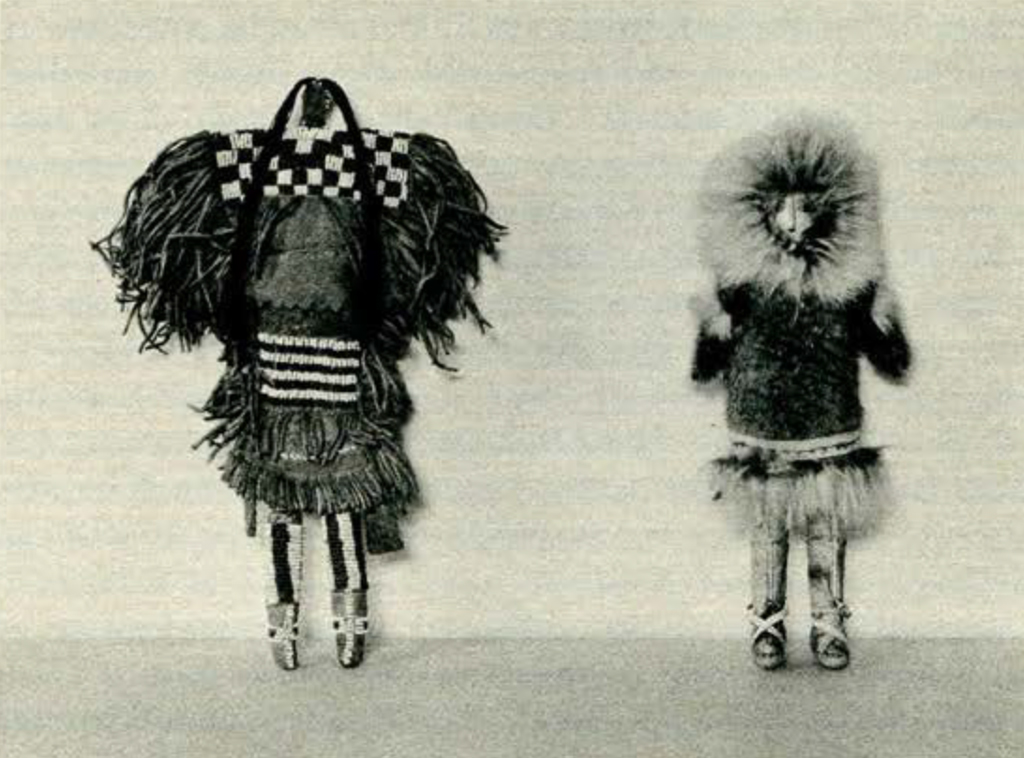IN the American Indian Section of the Museum, among the weapons once used in fighting and hunting, among the clothing and every-day things, there are toys and games that belonged to the younger members of the tribes. There you will find a Sioux child’s sled of buffalo ribs for coasting down grassy hills in summer as well as down snowy slopes in winter. The toy kyaks and sledges are exactly like the big Eskimo skin boats and wooden sledges. Among the games there is one which is an Eskimo favorite; it consists of a bone pierced with a number of holes and attached by a thong to a bone peg. The player tosses the bone and tries to catch it in one of the holes with the peg.

Image Number: 12731a, 12731b
Indian children learned in play those things they would need to know when they grew up. While Plains Indian boys played at hunting the buffalo, and Eskimo boys played at harpooning seals and whales, their sisters played at housekeeping and made clothes for their dolls.

Image Number: 12774
Here are four dolls which are in the Museum. The one at the upper left on page 60 belonged to a little Apache girl; across from her is an Eskimo doll. The Cheyenne doll above at the right keeps company with a Katchina who, strange looking as she may seem to us, was no doubt beloved by the Pueblo child who owned it. They are all, excepting the Katchina, dressed like the children or their parents. Katchinas are supposed to represent not real people at all, but spirits, who, living in the mountains, come at certain times of the year to live among the Pueblos.
E.H.

